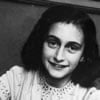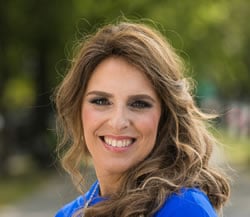
Thursday, November 6th, 2008, 12:00
Nechama Dina Spiero has arranged for two wonderful women from the community who were at my lecture last night to take me touring. Before they arrive, I have a chance to chat for a few minutes with Nechama Dina about life in Holland.
Nechama Dina is originally from Montreal, while her husband was born and bred in Holland. Over the years, she tells me, she has become used to the different cultural environment. Most of her children attend the local Jewish cheder (Jewish dayschool) while her oldest son learns and dorms in a yeshiva in France.
Marje and Susie arrive and it is time to leave. They tell me more about the Spieros and how this special family has touched so many individuals here in Amsterdam. "As you can see, we are not strictly religious," Susie explains, pointing to her jeans. "But Nechama Dina and her husband just accept us for what we are, without any pressure. They are just here to teach and inspire and be friendly."
Marje elaborates on how successful the Spieros are at making even the younger generation—young men and women in their teens and twenties—feel comfortable with them and their Judaism.
"Who would ever think our young people would be comfortable with such a religious rabbi?" Marje notes. "But Nechama Dina invites them for a Sukkot meal and they go! And happily too."
"Judging from her pastries last night, it must be her cooking," I joke.
Our first stop in Amsterdam is right around the corner—a real working mill. Who can leave Holland without a picture by the mill? We snap away!
Our next destination is the Sephardic Spanish Portuguese synagogue built around the 1600s. The structure is incredible and the architecture awe-inspiring. Huge beautiful brass lanterns adorn the synagogue, but instead of holding light bulbs, they are graced by long white candles. To date, the synagogue is still without any electricity and services are held regularly every Friday night by candlelight. I imagine how breathtaking it must be! The synagogue is so beautiful that weddings often take place here, even for those of non-Sephardic descent.
After being expelled from their country, a large segment of the Spanish/Portuguese community made their way here and built this stunning structure. I stand here in it, so overwhelmed with such a rich history. Yet I ponder on how so much of it was so tragic.

Next we're off to the house of Anne Frank. The mood here is serious and somber. These are the very rooms where Anne Frank hid during the early years of the Holocaust. These very rooms have been turned into an educational museum, to teach the world about the thoughts, feelings, fears and hopes of this brave young woman whose only crime was that she was a Jew.
The house is very moving and at several moments it evokes strong emotion. Anne's father owned a company which was located in the front part of this house, with the warehouse on the ground floor, and the offices and storeroom upstairs. The family hoped to escape being captured by the Nazis by going into hiding and the upstairs rooms were changed into living quarters.
The loneliness, betrayal, isolation and desperation that Ann and her family must have felt. How quiet they needed to be during the day, lest their footsteps be heard by the workers below. How black and dark the front rooms needed to remain, lest they be spotted from a window.
After more than two years, the family was betrayed and deported by the Nazis.
I read Anne's famous words, written on April 9th, 1944, inscribed on the wall of one of the rooms:
"One day this terrible war will be over. The time will come when we'll be people again and not just Jews! We can never be just Dutch, or just English or whatever, we will always be Jews as well. But then, we'll want to be."
Before exiting the house, we read as well the words of Primo Levi, writer and Auschwitz survivor:
"One single Anne Frank moves us more than the countless others who suffered just as she did, but whose faces have remained in the shadows. Perhaps it is better that way; if we were capable of taking in all the suffering of all those people, we would not be able to live."
Walking through these rooms, I think one of my recurrent thoughts. The greatest miracle today is truly the Jewish people—a nation who has suffered so much, has undergone such persecution, such tragedy, yet remains here today, still refusing to be swallowed up by the nations of the world around us. To have a people still questing for a connection to their roots, to their history and to their G‑d—despite their past, and present, being so drenched with Jewish blood, tears and horrors—is indeed the greatest miracle possible!
Next, we tour the harbor and some other areas around Amsterdam, including the center of town and the brand new and very modern biblioteque (library), which has a fabulous view from its top floor of the center of town. We pass, as well, the Weeping Tower, right near the harbor, where wives would weep as they parted from their husbands who were embarking on sea journeys, unsure of whether they would actually return. It was in this tower, as well, that the women became widows as they were informed of the ships that had sunk at sea.
We're ready to head back to the parking lot to our car. Here's when I can't resist snapping one more picture of the indoor parking lot. An entire floor is crowded not with parked cars, but parked bikes—the preferred method of transportation in Holland!







